HYDRAZINE MONOHYDROBROMIDE
Synonym(s):Hydrazine monohydrobromide;Hydrazinium monobromide
- CAS NO.:13775-80-9
- Empirical Formula: BrH5N2
- Molecular Weight: 112.96
- MDL number: MFCD00065394
- EINECS: 237-412-7
- SAFETY DATA SHEET (SDS)
- Update Date: 2024-11-05 11:59:05
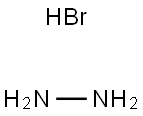
What is HYDRAZINE MONOHYDROBROMIDE?
Chemical properties
white, crystal(s) flakes; used in soldering flux; monoclinic, a=1.285 nm, b=0.454nm, c=1.194nm [CIC73] [HAW93]
The Uses of HYDRAZINE MONOHYDROBROMIDE
Hydrazine monohydrobromide (hydrazinium bromide) may be used in the synthesis of bromostannates and bromostannites by reacting with tin bromide and also in soldering flux.
General Description
Hydrazine monohydrobromide (hydrazinium bromide) is a hydrobromide salt of hydrazine. It has been prepared by adding aqueous hydrobromic acid to aqueous hydrazine. Its crystal structure has been investigated. It participates in the synthesis of 2-(2′-furoyl)-4(5)-(2′-furanyl)-1H-imidazole (FFI). It is formed as an intermediate during the formation of phosphaminimides from hydrazide derivatives. The fumes from the pyrolysis of hydrazine monohydrobromide soldering flux have been reported to cause dermatitis.
Properties of HYDRAZINE MONOHYDROBROMIDE
| Melting point: | 87-92 °C(lit.) |
| Boiling point: | 190°C |
| Density | 2.300 |
| Flash point: | 190°C |
| storage temp. | Store below +30°C. |
| solubility | 3260g/l soluble |
| form | white monoclinic crystalline flakes |
| color | Colorless to Almost colorless |
| PH | 4-5 (100g/l, H2O, 20℃) |
| Water Solubility | soluble H2O, lower alcohols; insoluble most organic solvents [HAW93] |
| Sensitive | Hygroscopic |
| CAS DataBase Reference | 13775-80-9(CAS DataBase Reference) |
| EPA Substance Registry System | Hydrazine, monohydrobromide (13775-80-9) |
Safety information for HYDRAZINE MONOHYDROBROMIDE
| Signal word | Danger |
| Pictogram(s) |
 Skull and Crossbones Acute Toxicity GHS06  Health Hazard GHS08  Environment GHS09 |
| GHS Hazard Statements |
H317:Sensitisation, Skin H350:Carcinogenicity H410:Hazardous to the aquatic environment, long-term hazard |
| Precautionary Statement Codes |
P201:Obtain special instructions before use. P273:Avoid release to the environment. P280:Wear protective gloves/protective clothing/eye protection/face protection. P301+P310:IF SWALLOWED: Immediately call a POISON CENTER or doctor/physician. |
Computed Descriptors for HYDRAZINE MONOHYDROBROMIDE
| InChIKey | DVHXJLRODLTJOD-UHFFFAOYSA-N |
New Products
4-AMINO-TETRAHYDRO-PYRAN-4-CARBOXYLIC ACID HCL 4-(Dimethylamino)tetrahydro-2H-pyran-4-carbonitrile 4-Aminotetrahydropyran-4-carbonitrile Hydrochloride (R)-3-Aminobutanenitrile Hydrochloride 3-((Dimethylamino)methyl)-5-methylhexan-2-one oxalate 1,4-Dioxa-8-azaspiro[4.5]decane 5-Bromo-2-nitropyridine Nimesulide BP Aceclofenac IP/BP/EP Diclofenac Sodium IP/BP/EP/USP Mefenamic Acid IP/BP/EP/USP Ornidazole IP Diclofenac Potassium THOMAIND PAPER PH 2.0 TO 4.5 1 BOX BUFFER CAPSULE PH 9.2 - 10 CAP SODIUM CHLORIDE 0.1N CVS ALLOXAN MONOHYDRATE 98% PLATINUM 0.5% ON 3 MM ALUMINA PELLETS (TYPE 73) LITHIUM AAS SOLUTION 2-Bromo-1-(bromomethyl)-3-chloro-5-nitrobenzene 2-Bromo-3-nitroaniline N-(3-Hydroxypropyl)-N-methylacetamide 3-Bromo-6-chloropyridazine 4-ethyl-3-nitrobenzoic acidRelated products of tetrahydrofuran
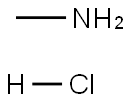
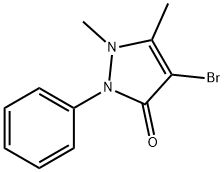
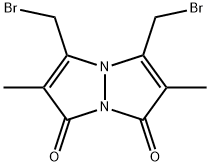
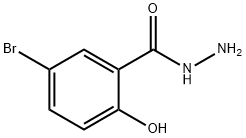
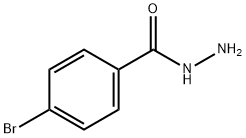

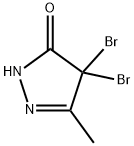

You may like
-
 Hydrazine monohydrobromide 98.00% CAS 13775-80-9View Details
Hydrazine monohydrobromide 98.00% CAS 13775-80-9View Details
13775-80-9 -
 Hydrazine Monohydrobromide CAS 13775-80-9View Details
Hydrazine Monohydrobromide CAS 13775-80-9View Details
13775-80-9 -
 1823368-42-8 98%View Details
1823368-42-8 98%View Details
1823368-42-8 -
 2-(3-(tert-butyl)phenoxy)-2-methylpropanoic acid 1307449-08-6 98%View Details
2-(3-(tert-butyl)phenoxy)-2-methylpropanoic acid 1307449-08-6 98%View Details
1307449-08-6 -
 Ethyl 3-(furan-2-yl)-3-hydroxypropanoate 25408-95-1 98%View Details
Ethyl 3-(furan-2-yl)-3-hydroxypropanoate 25408-95-1 98%View Details
25408-95-1 -
 2-Chloro-5-fluoro-1-methoxy-3-methylbenzene 98%View Details
2-Chloro-5-fluoro-1-methoxy-3-methylbenzene 98%View Details
1805639-70-6 -
 1784294-80-9 98%View Details
1784294-80-9 98%View Details
1784294-80-9 -
 Lithium ClavulanateView Details
Lithium ClavulanateView Details
61177-44-4